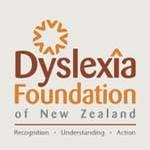
Principal Youth Court Judge Says Prevalence Of Neurodevelopment Disorders 'Sky High'
13 May 2016, 1:51PM
Southern PR
The prevalence rates of neurodevelopment disorders amongst youth offenders are ‘sky high’, Principal Youth Court Judge Andrew Becroft told the 2016 Neurodisabilities Forum in Wellington today.
Judge Becroft, citing UK figures* showing between 60-90% of young offenders have communication disorders, said there was no reason the New Zealand incidence would be any different.
Neurodevelopment disorders from learning differences such as dyslexia, communication disorders, attention deficit hyperactive disorder, autism, traumatic brain injury, epilepsy and foetal alcohol syndrome, had been ‘largely invisible’ in the Youth Court for the last 25 years, and their prevalence and implications for the youth justice sector were only now just beginning to be understood.
“Every one of these disorders has sky high disproportionate prevalence in the New Zealand youth justice system,” Judge Becroft said.
While awareness and understanding of neurodevelopmental disorders was growing, with a raft of youth justice system responses in train, there was still much work to be done.
“There must be about 300 offenders with Foetal Alcohol Syndrome Disorder in the Youth Court each year, and we would miss 299 of them,” Judge Becroft said.
He noted that it would be ‘remiss’ of him not to mention that including 17-year-olds in the youth justice system would have the singular advantage of including a group of people that probably most need a thoughtful, nuanced approach to neurodevelopment disorders.
Proposals to raise the Youth Court age from the current level of 16 years to include 17 years olds are currently before Cabinet.
Judge Becroft said the fact that 17 year olds were currently excluded, despite the United Nations Convention for the Rights of the Child defining a child as anyone under 18, was an “enduring stain on New Zealand’s otherwise good youth justice record”.
He said that New Zealand’s youth justice system was now said by UK researchers to be world leading in a pioneering response to the neurodisability issues.
“New Zealand now leads the world in non-charging, non-court alternatives and it is only a small group of offenders who end up in the Youth Court,” he said.
But the Youth Court was not a soft option.
“Anyone who characterizes the Youth Court as a namby pamby, kumbaya-singing, milo-drinking show that cannot hold young people to account is absolutely wrong.”
Phil Dinham, manager of Youth Justice Support for Child, Youth and Family, told the Forum that diagnosis, assessment and understanding of neurodisabilities must be followed by wrap-around services that support young people to reach their potential.
Of the 20,000 young people aged 14-16 apprehended by police every year, only about 2000 end up charged in the Youth Court. About 80% of youth offending was dealt with by police via diversion or Family Group Conferences. However reoffending rates following diversion and Family Group Conferences was high.
“This is a fantastic tale of diversion, but when diversion means we don’t understand the issue all we get is churn,” Dinham said.
Other speakers included Chair of the NZ Institute for Educational and Developmental Psychologists Rose Blackett, Dr Katie Bruce from JustSpeak, Dr Nessa Lynch from Victoria University Faculty of Law, FASD-CAN’s Eleanor Bensemann, Sally Kedge from Talking Trouble, and Sonia Thursby from YES Disability.
The Forum – hosted by Dyslexia Foundation of New Zealand – was opened by Minister for Disabilities, Hon. Nicky Wagner, who said it was a ‘groundbreaking’ event bringing together key stakeholders for neurodisabilities for the first time in New Zealand.
“There is significant evidence that people with neurodisabilities are over-represented in the youth justice and prison population,” she said. This was a huge challenge which was now understood, an evidence based approach was required to move into the future.
Guy Pope-Mayell, Dyslexia Foundation Chair-of-Trustees, said the significant cross sector participation and discussions indicated a potential tipping point, but to tip would require strong government leadership.
*2012 Children’s Commissioner for England report (“Nobody Made the Connection: The prevalence of neurodisability in young people who offend”, Nathan Hughes et al, October 2012) – highlighting major correlations between learning differences/neurodisabilities and youth offending.
